Derivatives in 2024: Tech investment critical to competitiveness amid regulatory headwinds
Know your acronyms! This year promises to be full of them as regulators consult on and roll out changes that will sweep the financial landscape.
Leveraging technology to help manage costs and risks amid tightening regulatory oversight is critical for firms trading in derivatives, a market worth trillions of dollars. Institutions with robust, streamlined internal processes, from the front office to the back, will gain an advantage in volatile and competitive markets.
Timetable discrepancy in Basel endgame
One of the biggest sets of new regulations on the horizon is the Basel III “endgame”. The Basel III standard was developed in response to the global financial crisis of 2007-09, which exposed the weaknesses and shortcomings of the previous framework to ensure the resilience and stability of banks.
Basel III was agreed in 2010 and has been gradually implemented since 2013. The final implementation stage is now upon us, and there’s an impact on derivatives, which play an important role in the capital markets and economy by allowing companies to hedge and mitigate risk.
According to the US industry group SIFMA, the endgame regulations proposed by the US with regards to capital requirements are expected to “materially constrain large banks’ ability to support capital markets.” These banks have a critical role as counterparties in financial derivatives.
If the proposals to reduce counterparty risk are implemented, end-users in the US could find fewer products, less competition and higher costs in managing risk. Global trade association FIA estimates that the top six US clearing banks would need more than USD 7.2bn in additional capital for derivatives clearing services.
In addition to cost pressures, derivatives teams working cross-jurisdiction will have to contend with timetable divergence.
The EU endorsed the new banking rules in December and will start applying them on 1 January 2025. US regulators have proposed July 2025 for compliance with the new requirements, with a multiyear transition period. In the UK, the Bank of England announced in September a delay to the implementation.
“While this deferral better aligns the UK and US on implementation timing, it creates misalignment with other key jurisdictions such as the EU… In addition, final UK rules will not be released until Q2 of (2024) – just 12 months before the go-live deadline – presenting a narrower window for implementation than many firms anticipated,” said the EY’s Jared Chebib.
Divergence in clearing
Derivatives desks and compliance systems will also need to track divergence in clearing.
Since the 2008 financial crisis, authorities have sought to push more derivatives through a central clearing process to render the financial system more stable and resilient. Clearing ensures a transaction is executed and settled even if one side of the party goes under.
The US Securities and Exchange Commission on 13 December approved new rules to mitigate systemic risk. Coming into effect in phases by June 2026, cash and repo transactions in US Treasury securities must be centrally cleared.
US Treasuries play a significant role in global derivatives and financial markets, and broader clearing might help cut settlement risk, and boost liquidity, transparency and balance sheet capacity. “But it also comes with costs due to clearing fees, margin requirements, documentation and potential systems development,” said ISDA chief Scott O’Malia.
In Europe, the EU has been concerned about the reliance on UK clearing houses after the country left the bloc at the end of 2020. The proposed European Market Infrastructure Regulation 3.0 (EMIR 3) aims to increase the attractiveness of the region’s central counterparty clearing houses.
Law firm Ashurst said that the UK will not automatically onshore these EMIR amendments following Brexit. Therefore, “there is likely to be increasing divergence between the two regulations.”
The UK’s new EMIR reporting rules will apply from 30 September 2024. The EU’s will apply from 29 April 2024.
Tackling challenges with modernization
The operating environment is more challenging, requiring market participants to leverage technology to simplify operational complexities. And there are other regulatory changes, including shorter settlement periods, that could impact derivatives.
The current standard to settle a securities transaction is two days (T+2). From 28 May, transactions in US cash equities, equity derivatives, corporate debt, and unit investment trusts must be settled in one business day (T+1). India switched last year successfully and is already contemplating a move to same-day settlement (T+0), but the US is the big test.
The pressure is acute for international brokers and investors who manage cross-currency transactions and cash positions in different jurisdictions and time zones.
Security-based swaps are excluded from the settlement cycle requirements, but the situation is less clear-cut in other areas.
According to Alexa Rollins at law firm Katten, “Investors and issuers alike would be well served to consider the impact of a T+1 settlement period on… convertible debt securities and warrants. For example, many such securities require that shares of common stock issuable upon conversion or exercise be delivered within the standard settlement period for equity trades effected by US broker-dealers.”
Efficient margin and collateral management throughout the lifecycle of a trade is imperative in controlling costs associated with derivatives. And as regulatory changes force all corners of the capital markets to study the efficiencies of their internal processes, more automation, from the back office to the front, is inevitable.
However, ecosystems that rely on digital technology also have cybersecurity vulnerabilities, requiring financial and personnel resources.
An EU regulation to strengthen the IT security of financial entities and ensure resilience in the event of severe operational disruption, Digital Operational Resilience Act (DORA), is set to be fully implemented from January next year and is expected to take up a significant chunk of technology spending in the medium term.
Consolidated tape a move closer to an integrated EU Capital Markets
In a symbolic moment on the path to creating a more coherent and integrated capital markets infrastructure in the EU, the European Parliament on 16 January voted to adopt the revised Markets in Financial Instruments Regulation (MiFIR) and the Second Markets in Financial Instruments Directive (MiFID II).
One of the proposals mandates the creation of Consolidated Tapes (CT) of bond prices by mid-2025 and for stocks and derivatives during 2026. The goal is to collate market data associated with trades on one platform, providing transparency and a level playing field for investors.
Issuers and investors currently acquire real-time data from various exchanges and information providers. Those with deeper pockets can buy several data sets to obtain a more comprehensive, holistic view of markets and prices.
A unique Consolidated Tape should reduce market fragmentation and information asymmetries, and attract more overseas investment to the EU. The challenges will be ensuring the cost of access is reasonable, making the Consolidated Tape provider role commercially viable, and fleshing out what ‘real-time’ means regarding the pre-trade and post-trade data to be included.
Most experts consider that Consolidated Tapes will be positive, including our colleagues at ClarusFT who discussed the matter some time ago. ISDA, on the other hand, doesn’t think a use-case for a derivatives CT has been demonstrated, saying back in 2022 that the market differs significantly from the equity market in structure and liquidity.
There is more to come on this topic so watch this space…
To invest in tech is to invest in people
The post-trade environment is on the cusp of transformative change as firms seek to optimize resources and cut costs while managing a myriad of regulations in 2024.
Prioritizing tech solutions, be they in-house or third-party, also makes it easier to retain and attract human talent at a time when work-life balance post-COVID is a priority for many.
In the derivatives industry, with its reputation for manual processes and long hours, holding on to staff with the required mathematical and quantitative skills is far from easy.
Last year, a whitepaper commissioned by ION and conducted by Acuiti highlighted the challenges facing sell-side derivative firms in attracting and retaining talent. Most respondents said it was challenging across their organization, with a third saying it was more difficult in derivatives, particularly in clearing. According to the majority of firms that had invested in technology over the previous three years, employee satisfaction had improved.
Investment in better post-trade processing technology can significantly reduce the time and resources dedicated to manual processing and controls. With a large chunk of the workforce anticipated to retire or leave the industry over the next few years, and with tighter regulations coming, it’s imperative that firms harness technology, from AI through to APIs, to stay competitive.
Where are you with your current technology?
To learn how ION solutions can help you in Cleared Derivatives, contact us today.



